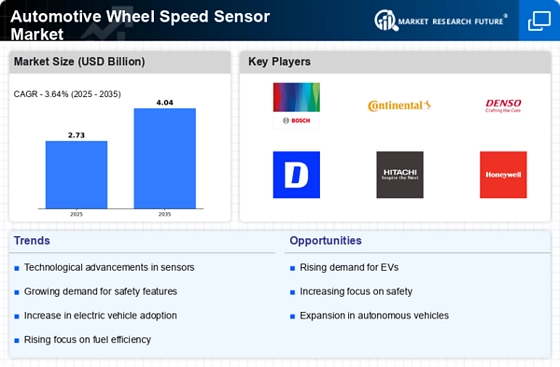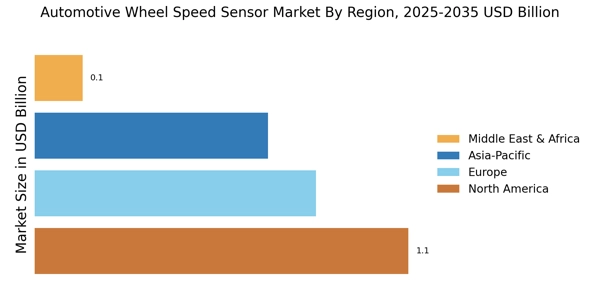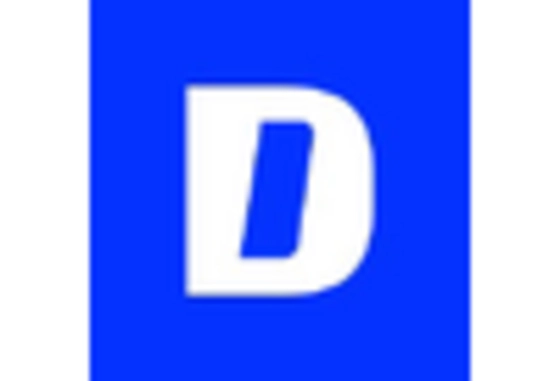Regulatory Standards and Compliance
Regulatory standards and compliance requirements are playing a pivotal role in shaping the Automotive Wheel Speed Sensor Market. Governments worldwide are implementing stringent regulations aimed at improving vehicle safety and emissions. These regulations often mandate the use of advanced safety features, which rely on accurate wheel speed data. For instance, the implementation of new safety regulations in various regions is likely to drive the demand for wheel speed sensors, as manufacturers strive to meet compliance standards. The market is expected to see a boost as automakers invest in technologies that align with these regulations. This trend indicates that the Automotive Wheel Speed Sensor Market will continue to evolve in response to regulatory pressures, ultimately leading to increased sensor adoption across various vehicle models.
Growth of the Automotive Aftermarket
The Automotive Wheel Speed Sensor Market is also benefiting from the expansion of the automotive aftermarket. As vehicle ownership rates increase, the demand for replacement parts, including wheel speed sensors, is on the rise. This trend is particularly pronounced in regions with a high number of older vehicles, where the need for maintenance and replacement of worn-out components becomes critical. Market analysis suggests that the automotive aftermarket is expected to grow at a CAGR of approximately 6% over the next few years, driven by factors such as increased vehicle age and rising consumer awareness regarding vehicle maintenance. Consequently, the Automotive Wheel Speed Sensor Market stands to gain from this trend, as more consumers seek to replace faulty sensors to ensure optimal vehicle performance.
Rising Demand for Vehicle Safety Features
The Automotive Wheel Speed Sensor Market is experiencing a notable surge in demand for enhanced vehicle safety features. As consumers become increasingly aware of the importance of safety in automotive design, manufacturers are integrating advanced technologies that rely on accurate wheel speed data. This trend is reflected in the growing adoption of anti-lock braking systems (ABS) and electronic stability control (ESC), both of which depend heavily on wheel speed sensors. According to industry estimates, the market for these safety systems is projected to grow at a compound annual growth rate (CAGR) of approximately 7% over the next five years. Consequently, the Automotive Wheel Speed Sensor Market is poised to benefit from this heightened focus on safety, as more vehicles are equipped with these critical sensors to enhance overall driving security.
Increasing Popularity of Autonomous Vehicles
The rise of autonomous vehicles is significantly impacting the Automotive Wheel Speed Sensor Market. As the automotive sector moves towards greater automation, the need for precise and reliable data from wheel speed sensors becomes paramount. Autonomous driving systems rely on real-time data to make informed decisions, and wheel speed sensors are integral to this process. The market for autonomous vehicles is projected to grow rapidly, with estimates suggesting a CAGR of over 15% in the next decade. This growth is likely to drive demand for advanced wheel speed sensors that can support the complex algorithms used in autonomous driving technologies. Thus, the Automotive Wheel Speed Sensor Market is expected to expand as manufacturers develop sensors that meet the rigorous demands of autonomous vehicle systems.
Technological Innovations in Sensor Technology
Technological advancements in sensor technology are significantly influencing the Automotive Wheel Speed Sensor Market. Innovations such as the development of more compact, efficient, and accurate sensors are driving the market forward. These advancements enable better performance in various driving conditions, thereby enhancing vehicle dynamics and safety. For instance, the introduction of MEMS (Micro-Electro-Mechanical Systems) technology has led to sensors that are not only smaller but also more reliable and cost-effective. The market for MEMS-based sensors is expected to grow substantially, with projections indicating a CAGR of around 8% in the coming years. This evolution in sensor technology is likely to create new opportunities within the Automotive Wheel Speed Sensor Market, as manufacturers seek to incorporate these advanced solutions into their vehicles.


















Leave a Comment